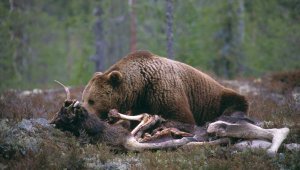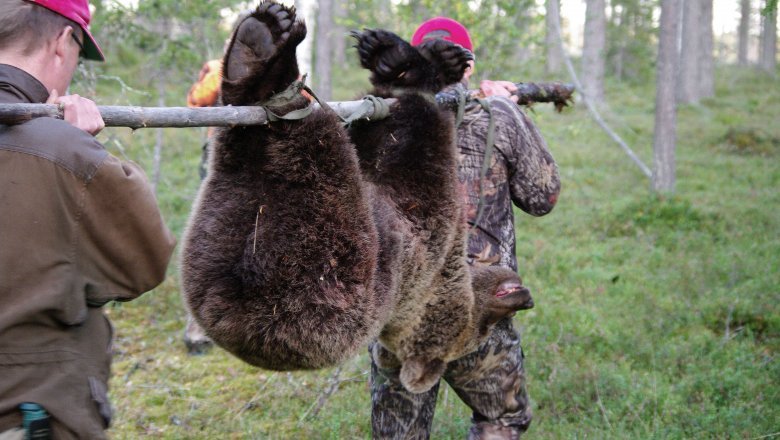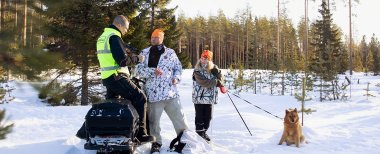The hunting of a large carnivore is always the exception, not the norm
The hunting of large carnivores is based on their population management plans. The plans require that the populations remain viable and shy enough that they will steer clear of people. The Finnish Wildlife Agency grants exceptional permits for hunting large carnivores that cause damages. The animal hunted with this type of exceptional permit is the property of the state, which in practice means it is to be delivered to wildlife researchers. An exceptional permit of this type may be granted at any time of the year.
Exceptional permits for hunting large carnivores may also be granted for the purposes of population management, but only in regions where the population is strong. In these cases the hunted animal belongs to the hunter. So far, no exceptional permits have been issued for wolverine hunting.
The species-specific population management plans divide Finland into population management regions. Each region may have very different goals concerning population management. For example, a majority of exceptional permits to hunt bears for the purposes of population management are granted in regions with so-called established populations, while fewer permits are issued in regions where the bear population is in the stage of spreading or developing.
Before an exceptional permit is granted, it is determined whether the permit could have a negative impact on achieving or maintaining the favourable conservation status of the species, and whether the requirements for exception defined in the Hunting Act are met. When considering exceptional hunting permits, alternative ways to solve the situation in a satisfactory manner must also be considered.
Bear hunting
Bear hunting has seen a resurgence of sorts in Finland. As the brown bear population has grown, hunters from a wider area now have the chance to participate in bear hunting. Bear hunting skills have remained intact in eastern and northern Finland. Elsewhere there has been a lull in the tradition and it is being revived by training hunters. Read more about bear hunting.
Wolf hunting
Wolf hunting is only really possible when there is snow on the ground. The tracks in the snow tell the hunters where the wolves have settled for the day. When their location is known, the wolves are encircled in a circle that is large enough to ensure that the wolves are not scared off too early. When it is certain that the wolves have been completely surrounded, the encirclement is marked with flag line. Read more about wolf hunting.
Lynx hunting
The lynx has spread to all parts of Finland and many hunters are now able to participate in lynx hunts. The hunting season for lynx begins in early December in nearly all of Finland with the exception of the reindeer herding area, where the season has already begun in early October. Lynx hunting is only really possible when there is snow on the ground. Read more about lynx hunting.
Illegal hunting
Killing a large carnivore without a permit or in a manner that is otherwise against the law is usually considered an aggravated hunting offence. Read more about illegal hunting.


